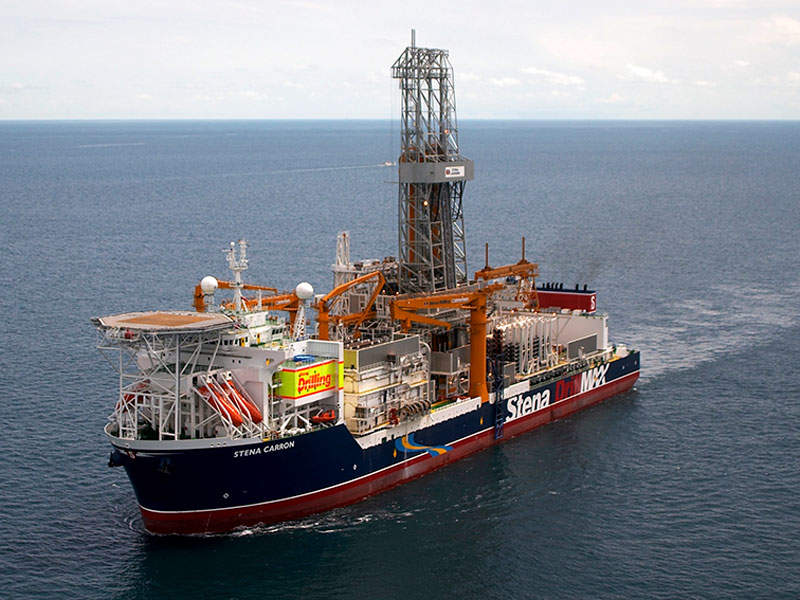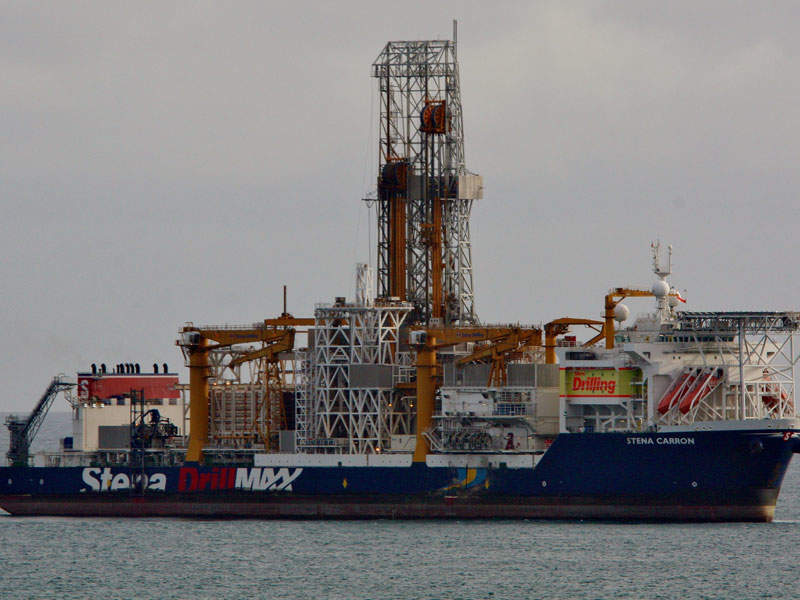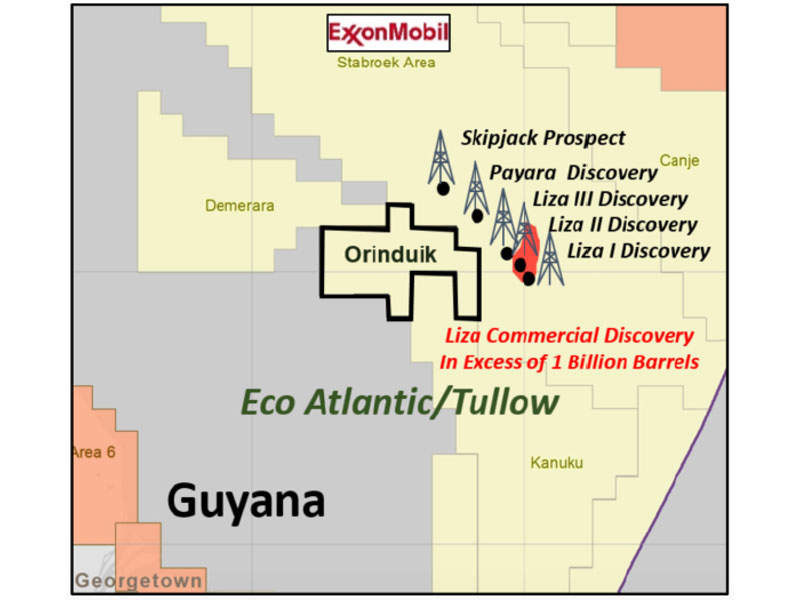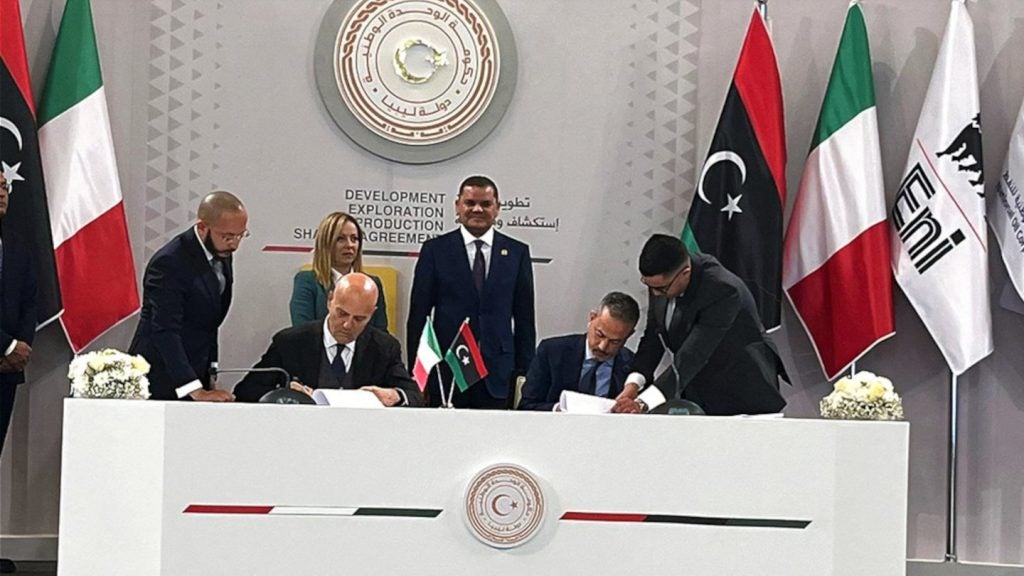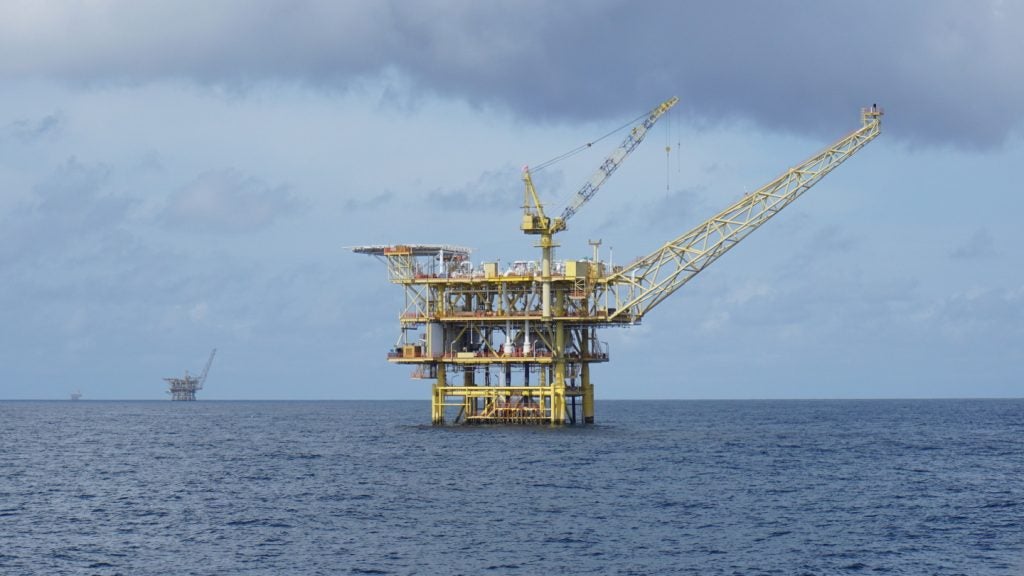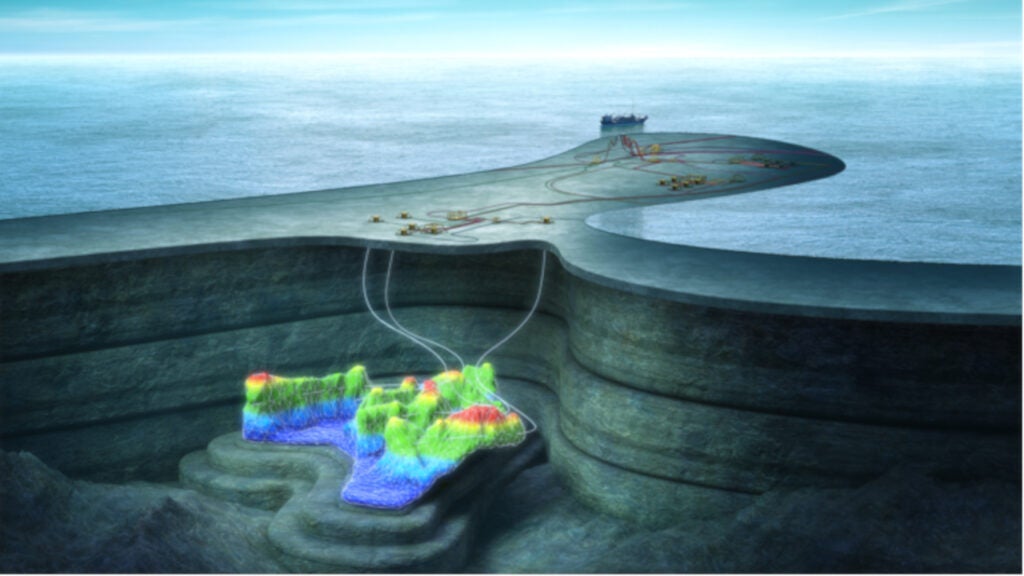Located in the Stabroek block offshore Guyana, Payara prospect is the second discovery in the block after the Liza prospect.
Esso Exploration and Production Guyana is the operator and holds 45% interest in the block. Hess Guyana Exploration and CNOOC Nexen Petroleum Guyana respectively hold 30% and 25% interest in the block.
Geology of the Guyana Basin
The Guyana Basin is an underexplored petroleum province and has witnessed minimal exploration activity since the late-1980s. Existing seismic data has indicated the presence of multiple play types, including large early Cretaceous structures, structural-stratigraphic hydrocarbon traps, and tertiary mass transport complexes.
In the exploration area, the Cenomanian-Turonian Canje formation source rock is covered by a thick Cretaceous section located within a submarine canyon. This area was targeted by Exxon.
Stabroek block offshore Guyana
The Stabroek block covers 6.6 million acres (26,800km²) offshore Guyana and is equivalent to 1,150 Gulf of Mexico blocks. It contains multiple prospects and play types, apart from the Payara and Liza discoveries, indicating multi-billion barrel unrisked exploration potential.
The block also includes the Snoek and Liza Deep discoveries. These are world-class oil discoveries expected to deliver substantial benefits to Guyana.
Payara prospect reserves
The gross recoverable resources of Payara are estimated to be 500 million barrels of oil equivalent (boe). The Stabroek block is estimated to contain gross discovered recoverable resources between 2.25 billion and 2.75 billion boe.
Payara discovery
The Payara field was discovered by the Payara-1 well, which was drilled to a depth of 18,080ft (5,512m) in 6,660ft (2,030m) of water. The discovery is located approximately 10-miles (16km) north-west of the Liza discovery.
The discovery well targeted similarly aged reservoirs as those of the Liza prospect. It encountered 95ft (29m) of high-quality, oil-bearing sandstone reservoirs. Two sidetracks were also drilled on the well.
The well was spudded in November 2016 and reached its full depth in December 2016. The discovery and the two sidetracks were drilled by the Stena Carron drillship supplied by Stena Drilling.
Payara prospect appraisal
Payara-2 appraisal well was drilled on the field in July 2017, approximately 12 miles (20km) north-west of the Liza development. It was drilled to a depth of 19,068ft (5,812m) in 7,000ft (2,135m) of water and encountered 59ft of high-quality, oil-bearing sandstone reservoirs.
Two sidetracks were also drilled to evaluate the appraisal well and a test was initiated. Results from the well test will be analysed to understand the full resource potential of the prospect. The appraisal well was drilled by the Stena Carron drillship.
Details of Stena Carron drillship
Stena Carron is a dynamically positioned mono-hull drillship, which is 228m-long and 42m-wide, with an operating draft of 12m.
The drillship is quipped with NOV dual hoisting and drilling tower. It is capable of operating in a maximum water depth of 10,000ft and has a maximum drilling depth of 35,000ft.
Development details of Payara
Exxon plans to carry out further appraisals on Payara along with additional exploration activities on the Stabroek block to determine their full potential.
Further appraisal works will provide key data to formulate development plans for the prospect. Payara is planned to be developed along with the Liza field. The first phase development of the Liza field was approved in June 2017.

